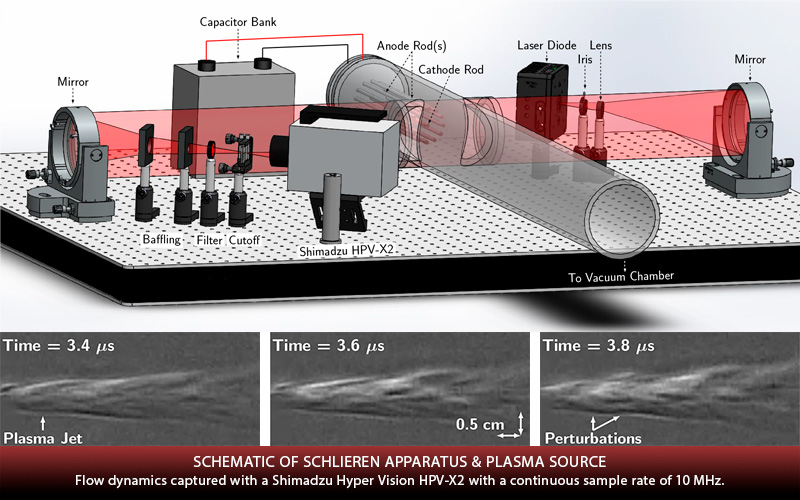by Thomas C. Underwood, Keith T. K. Loebner, Victor A. Miller & Mark A. Cappelli
Published online at link.springer.com on December 03, 2019
Abstract
The manner in which magnetized plasma jets evolve remains key to better understanding the behavior of hydromagnetic systems and providing new insights into how they can be dynamically controlled. In this work, we present the underlying theory, apparatus, and optical features of a schlieren diagnostic capable of cinematically visualizing dense plasma jets. We identify the range of plasma density over which the diagnostic is sensitive and describe ways to further improve image contrast. This diagnostic features the unique ability to simultaneously resolve both the characteristic Alfvénic timescales and spatial flow features with continuous acquisition over the lifetime of a jet. We use this diagnostic to visualize the formation and evolution of hydromagnetic jets produced from a plasma gun device. Dynamic coherent flow features are identified and tracked over time throughout the evolutionary progression of plasma jets. Finally, the process by which these coherent features translate into perturbations of magnetized bow shocks is visualized.
Introduction
With the advent of modern high-speed imaging systems, it is now becoming possible to visualize both the structure and dynamics of previously inaccessible phenomena. Such visualization have contributed to breakthroughs in fields ranging from erosion (Hassani-Gangaraj et al. 2018) to biology (Patek and Caldwell 2005) and have proven essential in better understanding the underlying physics that govern them. Similar opportunities exist to expand the knowledge of both hypersonic and plasma flows where conventional visualization approaches have been unable to resolve the widely disparate temporal and spatial scales over prolonged periods. Among these, hydromagnetic plasma jets in particular offer exciting research opportunities with applications including astrophysics (Underwood et al. 2017), plasma jet driven magneto-inertial fusion (PJMIF) (Thio 2008; Cassibry et al. 2006, 2009), z-pinches schemes (Bickerton 1980; Shumlak et al. 2001), and space propulsion (Cheng 1970). Detailed knowledge of the plasma’s evolution in structure and stability have important implications for both fundamental and laboratory- scale systems. However, visualizing the evolution of such systems is a difficult task as it requires diagnostics to simultaneously resolve both the flow features and the characteristic scales over which perturbations grow.
Keywords: Shimadzu Hyper Vision HPV-X2, schlieren imaging, hydromagnetic systems, plasma jets, Alfvénic Timescales
